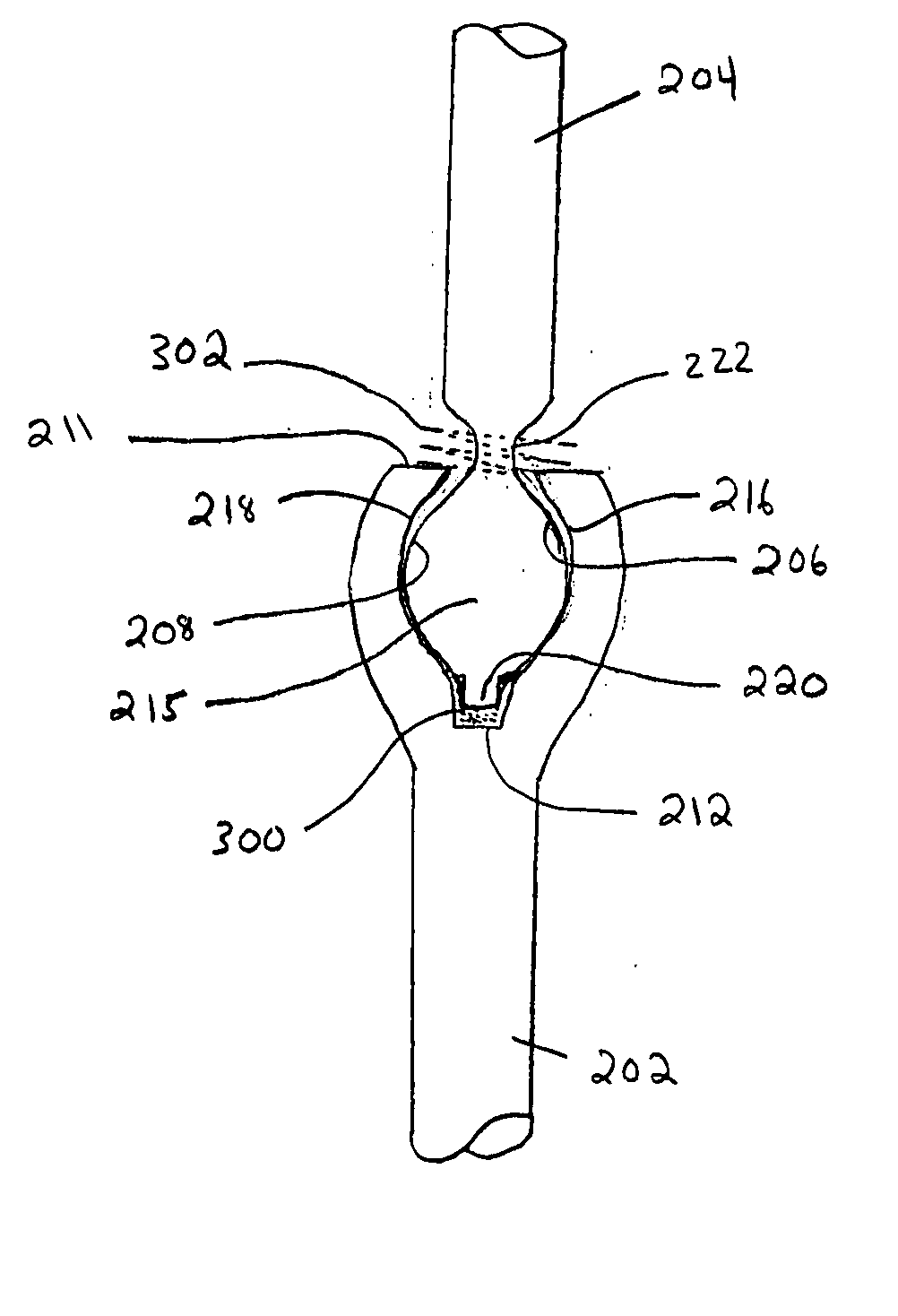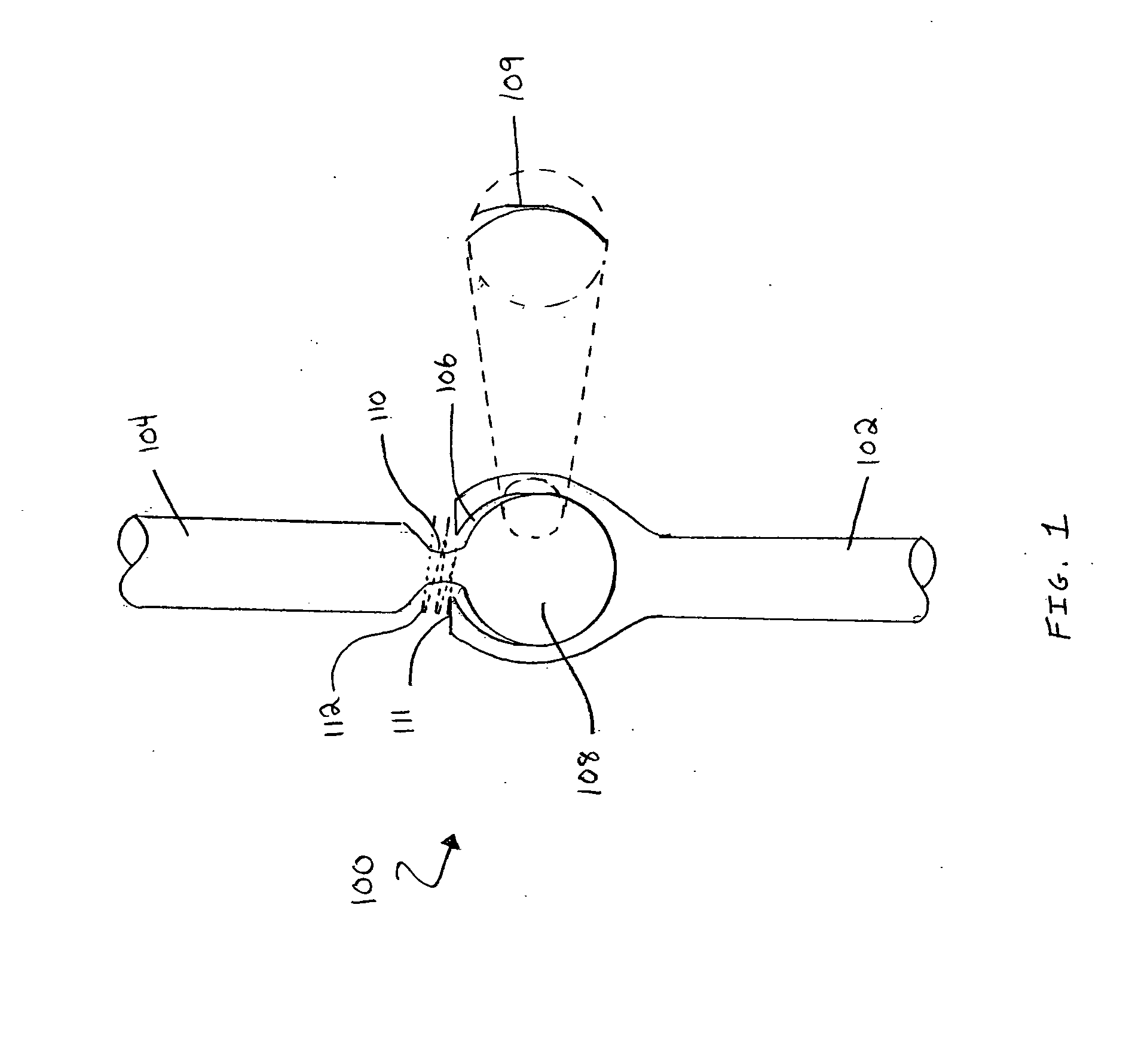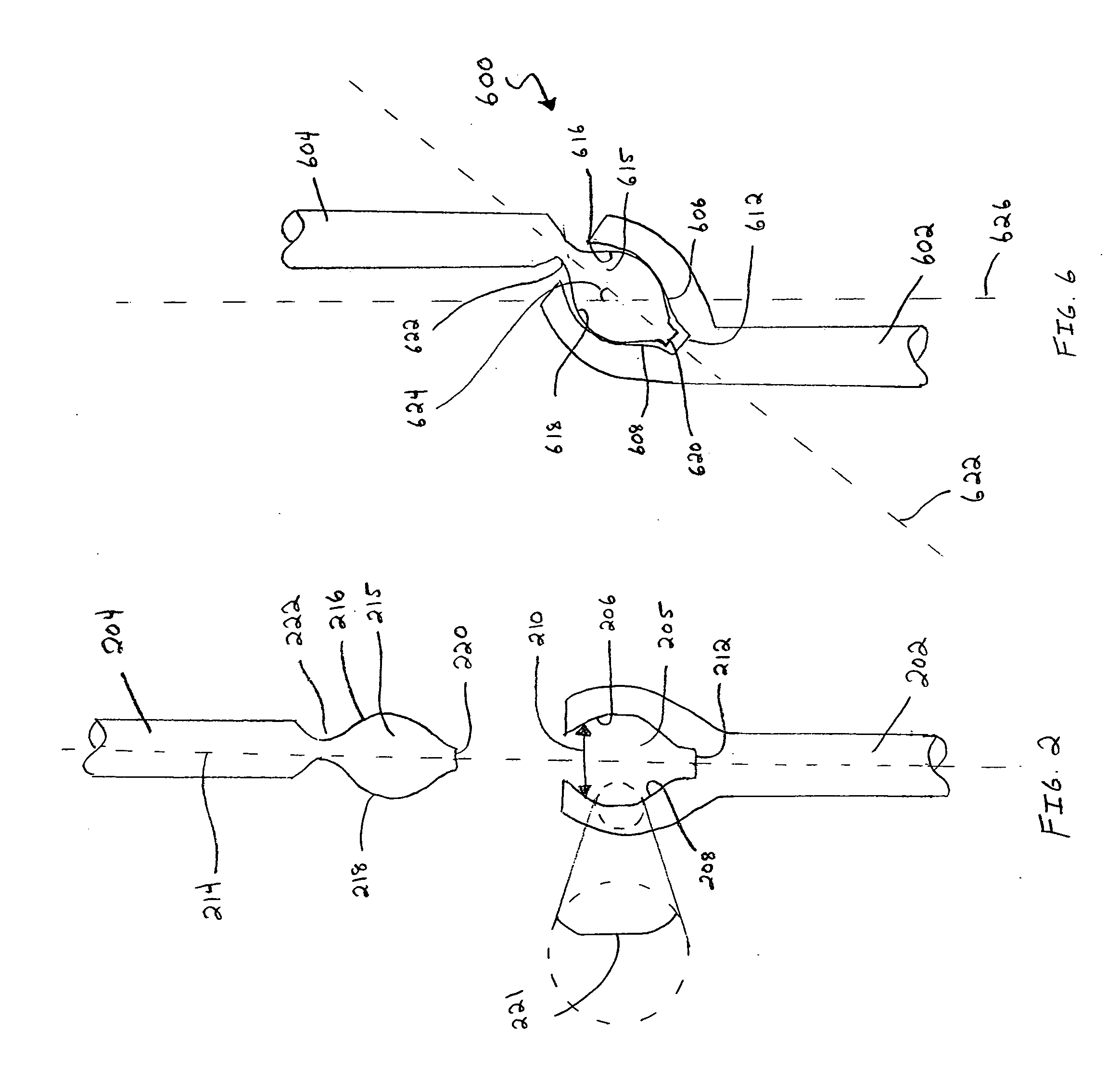Spinal stabilization systems
a technology of spinal column and stabilizing element, which is applied in the field of spinal column stabilization devices, can solve the problems of significant load placed on the stabilizing assembly, pain and complications, loosening of the assembly from the vertebrae, breaking of the assembly, etc., and achieves the effects of preserving or simulating flexion, extension, compression and rotation of the spine, and lateral bending
- Summary
- Abstract
- Description
- Claims
- Application Information
AI Technical Summary
Benefits of technology
Problems solved by technology
Method used
Image
Examples
first embodiment
[0076] In a first embodiment, in accordance with this aspect of the invention, the dynamic stabilizing element is the dynamic spinal orthosis disclosed in U.S. Pat. No. 5,672,175, the disclosure of which is incorporated herein by reference. FIGS. 17 and 18 illustrate a spinal stabilization system that used two spinal stabilizing elements similar to those disclosed in the '174 patent. Here, the spinal stabilization system includes two dynamic stabilizing elements, each composed of a flexible rod 1702, 1704. The flexible rods are each attached to one vertebra in a manner that allows the rod to translate longitudinally with respect to that vertebra, where a “longitudinal” translation refers to a translation along the long axis of the spine. The flexible rods are also each attached to another vertebra in a manner that does not allow the rod to translate longitudinally with respect to that vertebra. In the embodiment depicted in FIG. 17, each rod is attached by a first connector 1706, 17...
second embodiment
[0077] In a second embodiment, in accordance with this aspect of the invention, the spinal stabilization system includes two dynamic stabilizing elements, wherein each dynamic stabilizing element is composed of a damping element and each damping element is a dynamic bias device as disclosed in U.S. Pat. No. 6,402,750, the disclosure of which is incorporated herein by reference. In this embodiment of the invention, the two stabilizing elements are disposed in a spaced-apart, substantially parallel relation, typically at the posterior of the spine, on opposite sides of the spinous processes. As described in the '750 patent, the damping elements may be springs, including coiled springs, leaf springs, articulated leaf springs, torsional springs, torsional leaf springs, or articulated torsional leaf springs. Each damping device is connected across a first and a second vertebra by a first and a second connector, respectively. Suitable connectors include screws, hooks and the like. FIG. 19...
PUM
 Login to View More
Login to View More Abstract
Description
Claims
Application Information
 Login to View More
Login to View More - R&D
- Intellectual Property
- Life Sciences
- Materials
- Tech Scout
- Unparalleled Data Quality
- Higher Quality Content
- 60% Fewer Hallucinations
Browse by: Latest US Patents, China's latest patents, Technical Efficacy Thesaurus, Application Domain, Technology Topic, Popular Technical Reports.
© 2025 PatSnap. All rights reserved.Legal|Privacy policy|Modern Slavery Act Transparency Statement|Sitemap|About US| Contact US: help@patsnap.com



